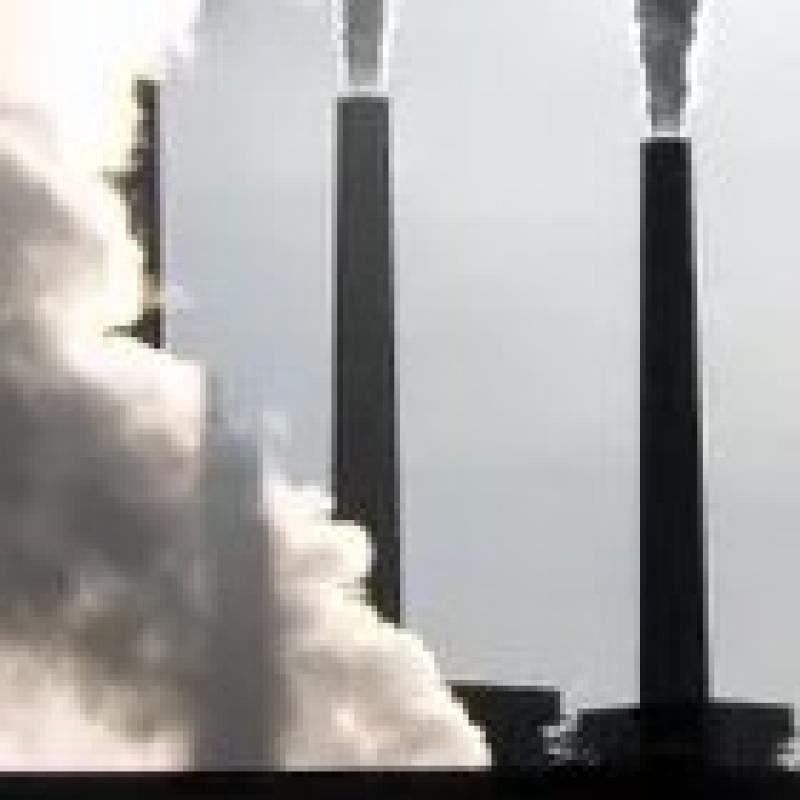'Coal is on the way out': study finds fossil fuel now pricier than solar or wind




“Even without major policy shift we will continue to see coal retire pretty rapidly,” said Mike O’Boyle, the co-author of the report for Energy Innovation, a renewables analysis firm . “Our analysis shows that we can move a lot faster to replace coal with wind and solar. The fact that so much coal could be retired right now shows we are off the pace.”
The study’s authors used public financial filings and data from the Energy Information Agency (EIA) to work out the cost of energy from coal plants compared with wind and solar options within a 35-mile radius. They found that 211 gigawatts of current US coal capacity, 74% of the coal fleet, is providing electricity that’s more expensive than wind or solar.
By 2025 the picture becomes even clearer, with nearly the entire US coal system out-competed on cost by wind and solar, even when factoring in the construction of new wind turbines and solar panels.
“We’ve seen we are at the ‘coal crossover’ point in many parts of the country but this is actually more widespread than previously thought,” O’Boyle said. “There is a huge potential for wind and solar to replace coal, while saving people money.”
Coal plants have suffered due to rising maintenance costs, including requirements to install pollution controls. Meanwhile, the cost of solar and wind has plummeted as the technology has improved. Cheap and abundant natural gas, as well as the growth of renewables, has hit coal demand, with the EIA reporting in January that half of all US coalmines have shut down over the past decade.
“Coal is on its way out,” said Curtis Morgan, the chief executive of Vistra Energy, a major Texas-based coal plant owner. “More and more plants are being retired.”
Data released last week highlighted the rise of renewables, with electricity generation from clean sources doubling since 2008. The bulk of renewable energy comes from hydro and wind, with solar playing a more minor, albeit growing, role.
Renewables now account for around 17% of US electricity generation, with coal’s share declining. However, the power of coal’s incumbency, bolstered by a sympathetic Trump administration, means it isn’t on track to be eliminated in the US as it is in the UK and Germany.
Fossil fuels continue to receive staunch institutional support, too. A recent report released by a coalition of environmental groups found that 33 global banks have provided $1.9tn in finance to coal, oil and gas companies since the 2015 Paris climate agreement.
In sobering figures released last week, the EIA predicted that US carbon dioxide emissions from energy will remain similar to current levels until 2050, with coal consumption dropping but then leveling off beyond 2020.
Such a scenario, disputed by other experts who argue the transition to renewables will be more rapid, would be compatible with disastrous climate change, causing vast areas of the US coastline to be inundated, the spread of deadly heatwaves, growth of destructive wildfires and food and water insecurity.
The Trump administration has largely ignored scientists’ warnings over these dangers, instead pushing ahead with an “energy dominance” mantra whereby enormous tracts of federal land and waters are opened up for oil and gas drilling.
The Energy Innovation report, which suggests the “smooth shut down” of ageing coal plants, comes as states and territories start to rally to California and Hawaii’s lead in committing to 100% renewable energy.
Lawmakers in New Mexico recently decided to follow suit , with Puerto Rico poised to vote on the issue this week as states and territories attempt to address climate change in lieu of the federal government.
“It would be better if we had a federal cohesive policy because not all states will take the initiative,” said O’Boyle. “In order to get an affordable, clean energy system we need both federal and state actors involved.”
Initial image: ‘We’ve seen we are at the ‘coal crossover’ point in many parts of the country.’ Photograph: Alamy
Tags
Who is online
49 visitors

But but, coal is king.../s
I know what i'm going to say below is true for Natural Gas. Not 100% sure about coal. Coal might be closer due to all the emission control costs the EPA has added recently ....
That said, here's the problem with studies like this. They usually don't account for all factors when they make comparisons. Right now one word can destroy renewable energies cost per unit.
Demand.
The amount of additional infrastructure that is required with renewable sources is generally cost prohibitive from a cost per unit standpoint to the end user. In other words your cost per KWH WILL go up significantly. That'e because sun doesn't always shine and wind doesn't always blow. Massive backup systems (such as battery banks) need to be built to insure "Demand" is met at all times. Thus significantly raising the cost per unit to end users.
I suspect this study did not account for that.
Are you implying that American ingenuity cannot come up with a blended solution and back up systems?
Evolution happens at all levels and this is no different.
Eventually there will be a blend of natural gas, nuclear and renewable energy that works for all 50 states.
I'm lucky to be in TX where I have solar that literally is free about 4 months of the year.
That may increase as we recently installed a Trane variable speed heat pump with variable speed blower to reduce our electric consumption by $110 per month.
Not at all. I just get tired of all the false promises made by renewable energy advocates.
Most of them don't know their head from a hole in the ground but they're cool ..... green proposing machines.
100% renewable energy is a pipe dream with todays technology and cost tolerance. Never happen in our lifetime with those considerations
Nice, i applaud you but that just reaffirms part of what i'm saying. Not everyone can afford the added cost of such a thing.
All the more reason to scrutinize it carefully.
Can you imagine what the wind or solar totals would be without Texas which generates at the very least 18% of its power from wind and solar?
And the chart only accounts for utility scale generation facilities.
That does not include almost 2 million homes with solar panels, a number which keeps growing every year.
And if I had a damned wind power generator during the last few TX nights we could be selling even more power back into the ERCOT grid.
Four of America's 10 windiest cities are in Texas.
That explains Texas politicians, LOL !!!
Or maybe it's a result of Texas politicians......
Petroleum is the most subsidized industry ever. There are subsidies at every stage, from exploration to depletion-writeoff.
Without those subsidies, gasoline at the pump would cost somewhere between ten and fifteen dollars per gallon.
I've seen many such reports. I know this to be true to my satisfaction. Feel free to do your own research.
No. It's around $8. EuroBigOil gets the same subsidies. Then drivers pay more pump taxes.
No.
If you're interested and honest, a few minutes with Google will enlighten you. If you're not interested or not honest, nothing anyone says will make any difference.
Not anymore Bob. The failures for subsidized green energy companies have been copious in the US and elsewhere.
Try to BS someone else who doesn’t know the industry from a technical and personal basis. You will lose this one if you keep trying.
Give it up. Go after something else.
Your problem.
peanuts
Lol .... that’s the best you got?
You’re losing it there Bobby.
I'm lucid, that's all.
Oh boy, the Solyndra bogey man syndrome again?
By 2014 the USDE portfolio was doing well.
By 2016 the interest payments were rolling in from the survivors.
The program guaranteed loans, not the success or the survival of these companies. It was intended to spark innovation, like NASA did for Tang.
Congress under Bush in 2005, put aside 10 billion to cover losses, which so far totaled $780 million ( $528m on Solyndra alone, key the groans please /s )
Over all losses of 2.28% with projected collected interest of between 5 & 6 billion profit to US taxpayers.
The program went quiet from 2011 til 2016 when it guaranteed new loans for 2 nuclear plants in Georgia and the Block Island Wind Farm off Massachusetts.
Naturally, Trump called on Perry to discontinue the program in 2017.
Once, informed by facts Perry not only kept the program going but expanded it with TELGP, maybe 1st Warrior or Kavika can chime in with more info.
So by most banking standards US DOE has done a better than expected job.
Nah, more like puzzled.
This is why I won't spend time doing research for you.
SP gave the details... which you ignored.
Well you could just google Us government energy subsidies" and see what pops up
instead of attacking anyone...even Bob.
and
_
Now, in fact, there are still too many subsidies for oil & natural gas in my opinion, but many have been eliminated by Bush 43 & Obama,
when the government pushed wind and solar subsidies, ( many of which are supposed to be phased out in 2019 & 2020 )
leaving many fossil fuel tax incentives and direct subsidies from 1916, still intact.
Many of the "subsidies" described by biased media sources are simply standard tax deductions available to most companies.
And that’s why I don’t waste too much time on you. Your bias.
Characterizing Solyndra as any kind of success is absolutely ridiculous. It was a complete flop. The program that funded Solyndra became successful in time but what was lost on Solyndra taxpayers will never get back.
The left wing spin doctors are playing loud tonite.
Ummm....
I did not mention Solyndra...
Perhaps you pay too little attention?
Sure you did, you quoted someone who included it.
Short attention span or intentionally disingenuous? We both know it’s the latter.
Do a "page search" in your browser. There are six instances of "Solyndra". None from me.
Wrong, as noted above, you referenced one.
Which do you mean, " quoted " or "referenced"? Or perhaps you don't know the difference?
Not bad thinking on Duke's part.
If they have solar panel farms it'd be cheap electricity and it'll keep people buying their power on their power grids because it would be cheaper for people then if they installed their own panels.
Still is a good idea for whatever reason.